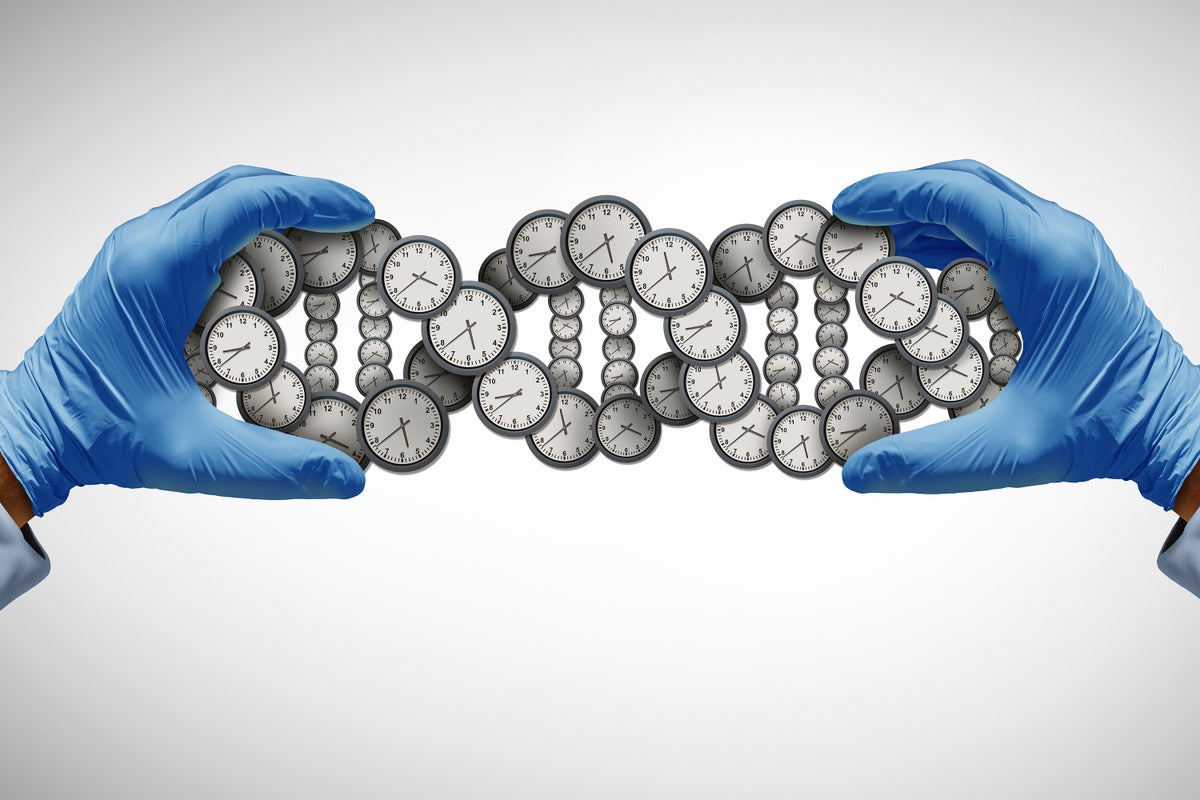A Giant Map Shows How DNA Changes as We Age
A map of DNA methylation changes in human organs—from the stomach to the retinas—could help researchers discover more targets for antiaging therapies
The visible effects of ageing on our body are in part linked to invisible changes in gene activity. The epigenetic process of DNA methylation — the addition or removal of tags called methyl groups — becomes less precise as we age. The result is changes to gene expression that are linked to reduced organ function and increased susceptibility to disease as people age.
Now, a meta-analysis of epigenetic changes in 17 types of human tissue throughout the entire adult lifespan provides the most comprehensive picture to date of how ageing modifies our genes.
The study assessed DNA methylation patterns in human tissue samples and revealed that some tissues seem to age faster than others. The retina and stomach, for example, accumulate more ageing-related DNA methylation changes than do the cervix or skin. The analysis also found universal epigenetic markers of ageing across different organs. This ‘epigenetic atlas’ might help researchers to study the link between DNA methylation and ageing and could aid the identification of molecular targets for anti-ageing treatments.
If you’re enjoying this article, consider supporting our award-winning journalism by subscribing. By purchasing a subscription you are helping to ensure the future of impactful stories about the discoveries and ideas shaping our world today.
The work is reported on the preprint server Research Square and has not yet been peer reviewed.
To elucidate how methylation relates to ageing, Nir Eynon at Monash University in Melbourne, Australia, and his colleagues conducted a meta-analysis of more than 15,000 samples from 17 human tissues taken from adults of different ages. They mapped out methylation changes across 900,000 potential sites in the DNA, then created an open-access atlas. “We had examples from people from 18 years old till 100 or so,” says Eynon, so we can look at the epigenetic markers and how they change across the human lifespan.
Overall, the researchers found that the mean amount of methylation varies greatly between tissues, ranging from 35% in the cervix, through to 48% in skin, 51% in muscle, 53% in the heart, 57% in the stomach and up to 63% in the retina.
Study co-author Macsue Jacques, also at Monash University, says almost all tissues have increased DNA methylation as they age. The exceptions are skeletal muscle and lung, “which has more of a loss of methylation with age”. Their analysis also found that different organs have distinct ageing patterns of DNA methylation. “Each tissue has a different shift that happens,” Jacques says.
As well as examining differences between tissues, the researchers screened individual gene sites throughout each tissue genome. “We wanted to find a common ageing mechanism that goes across all the tissue types,” says Jacques.
The researchers identified high methylation of the protocadherin gamma (PCDHG) gene family as a driver of the ageing process in multiple different organs. Other studies have shown that hypermethylation in the PCDHG gene family is linked to reduced white matter in the brain, a marker of accelerated cognitive decline.
Jacques sees the atlas as a resource to accelerate discovery of the core molecular mechanisms of ageing throughout the body, as well as in individual tissues. She hopes that it could be a tool to boost the search for anti-ageing therapies: it raises the tantalizing idea of shifting from treating individual age-related diseases, such as cardiovascular disease or liver disease, to treating ageing as a whole.
Holger Bierhoff, an epigeneticist at the Leibniz Institute on Aging – Fritz Lipmann Institute in Jena, Germany, says that the big question with working on epigenetic clocks has always been ‘what is causing ageing?’. “This work looks into the functional relevance of the methylation, rather than just using it as a timepiece for ageing.”
Big as the study is, says Bierhoff, this is still a tiny fraction of the roughly 30 million epigenetic sites in the human genome, so it might not present the whole picture of age-related DNA methylation.
Eynon accepts that, but says that the data in their atlas could still help identify the mechanisms behind ageing and reveal how to slow it.
This article is reproduced with permission and was first published on September 1, 2025.
Chris Simms is a science writer and editor based in Somerset, England. Follow Simms on Bluesky @chrisnsimms.bsky.social
First published in 1869, Nature is the world’s leading multidisciplinary science journal. Nature publishes the finest peer-reviewed research that drives ground-breaking discovery, and is read by thought-leaders and decision-makers around the world.
If you enjoyed this article, I’d like to ask for your support. Scientific American has served as an advocate for science and industry for 180 years, and right now may be the most critical moment in that two-century history.
I’ve been a Scientific American subscriber since I was 12 years old, and it helped shape the way I look at the world. SciAm always educates and delights me, and inspires a sense of awe for our vast, beautiful universe. I hope it does that for you, too.
If you , you help ensure that our coverage is centered on meaningful research and discovery; that we have the resources to report on the decisions that threaten labs across the U.S.; and that we support both budding and working scientists at a time when the value of science itself too often goes unrecognized.
In return, you get essential news, captivating podcasts, brilliant infographics, , must-watch videos, challenging games, and the science world’s best writing and reporting. You can even gift someone a subscription.
There has never been a more important time for us to stand up and show why science matters. I hope you’ll support us in that mission.
Thank you,
David M. Ewalt, Editor in Chief, Scientific American
Source: www.scientificamerican.com
